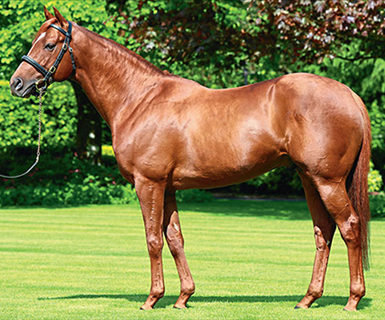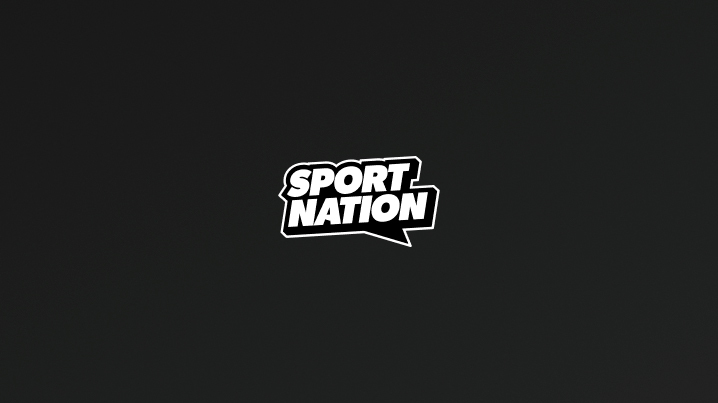Royal Ascot shines spotlight on both Australias
Richard Edmunds - Raceform • June 26th, 2025 7:00 PM • 5 min read

The name ‘Australia’ featured prominently in more ways than one during the five days of Royal Ascot last week.
Our trans-Tasman neighbours were unable to add to their proud history in the feature sprints, in which the likes of Choisir, Takeover Target, Miss Andretti, Scenic Blast, Starspangledbanner, Black Caviar, Merchant Navy, Nature Strip and Asfoora have previously played starring roles. Asfoora and the formerly Australian-trained Storm Boy finished unplaced in this year’s Gr. 1 King Charles III Stakes and Queen Elizabeth II Jubilee Stakes respectively.
However, there was still a strong Australian connection to this year’s Jubilee Stakes. This time it was the form out of one of Australia’s newest and richest races.
Run over a testing six furlongs (1200 metres), the Jubilee Stakes drew a competitive and international field of 14 sprinters. It was won by the French-trained Lazzat, who beat Japanese raider Satono Reve by half a length.
The name Lazzat may ring a bell from last year’s spring carnival in Sydney, when the Territories gelding lined up in the A$10 million Golden Eagle at Rosehill. Sent out as a $4.80 favourite, Lazzat finished second and was beaten by half a length by the William Haggas-trained Lake Forest.
Lazzat’s record now stands at 11 starts for eight wins and a placing, headed by Group One triumphs in the Jubilee Stakes and the Prix Maurice de Gheest.
Lazzat’s Royal Ascot heroics continued a remarkable run of performances by alumni of the 2024 Golden Eagle. The 1500-metre race for four-year-olds does not hold black-type status itself, but eight of this season’s runners have been subsequent Group One winners – Lazzat, Tom Kitten (All-Star Mile), Stefi Magnetica (Doncaster), Port Lockroy (Railway Stakes), Joliestar (Newmarket Handicap, Kingsford Smith Cup), War Machine (Stradbroke Handicap), Skybird (Lightning Stakes) and the Japanese visitor Ascoli Piceno (Victoria Mile).
The other notable Australian influence on Royal Ascot this year was syndicator OTI Racing, who book-ended the meeting with Docklands taking out the first race on the first day – the Gr. 1 Queen Anne Stakes – and then a carnival-closing win by potential Melbourne Cup candidate Sober in the Queen Alexandra Stakes.
The Queen Anne was the first Group One win for Docklands, who had been runner-up in the same race 12 months earlier. The five-year-old entire has now had 17 starts for four wins and eight
placings. He was another Northern Hemisphere raider on spring features in Australia last year, finishing fifth in the Cox Plate and sixth in the Champions Stakes.
The six-year-old Camelot gelding Sober, meanwhile, has now won eight of his 21 career starts.
“This is such a thrill for our partners back in Australia that invest in these horses,” OTI Racing director Terry Henderson said at Ascot. “We all know Royal Ascot is the greatest race meeting in the world, and to have a winner at each end of the meeting is just incredible.
“I think Sober can go to Australia, while Docklands can stay in England for the Queen Elizabeth II Stakes.”
The other major ‘Australia’ storyline involved the stallion, not the country.
A blue-blooded son of multiple Group One winners Galileo and Ouija Board, Australia himself was a five-time winner from only eight starts including the Gr. 1 Epsom Derby, Irish Derby and Juddmonte International Stakes.
As mentioned by Dennis Ryan on these pages earlier in the month, Australia’s broodmare numbers have fluctuated during his decade-long stud career and he commanded a service fee of only €10,000 this season. Within the space of the last few weeks, his fortunes have taken a drastic turn for the better.
Australia kicked off the month of June with a powerful front-running Epsom Derby win by Lambourn, who became his sixth individual Group One winner.
That number climbed to seven during Royal Ascot, when his three-year-old daughter Cercene defied 33-to-one odds for a hard-fought defeat of hot favourite Zarigana in Coronation Stakes.
Australia featured in the headlines again after the Jubilee Stakes, with Lazzat being a son of the Australia’s daughter Lastochka. Lazzat’s earlier victory in the Prix Maurice de Gheest credited Australia with his first Group One success as a broodmare sire.
Australia’s stellar form contributed to a recurring theme of Royal Ascot success for horses bred or purchased at the lower end of the price spectrum.
Docklands was bred by Mickley Stud and is by Massaat (who stands for a £3,500 service fee) out of a mare that cost 9,000 guineas. OTI bought Docklands for a mere £16,000. He has earned more than £900,000.
King Charles III Stakes winner American Affair is a son of Washington DC, who shares Massaat’s £3,500 service fee. Both stallions stand in the largely unheralded thoroughbred region of Shropshire.
Sands Of Mali, who sired his first Group One winner with Time For Sandals in the Commonwealth Cup for three-year-old sprinters, stands for €6,500 fee at Ballyhane Stud in Ireland. Himself a Group One-winning sprinter at Ascot in the British Champions Sprint, Sands Of Mali’s oldest progeny are three-year-olds.
Other low-priced stallions with Royal Ascot winners included Awtaad (€7,500), Golden Horn (£10,000), Postponed (£6,000), Phoenix Of Spain (€10,000), Saxon Warrior (€15,000) and Ulysses (£8,000).
The lowest-priced yearling purchase to win all week was the two-year-old Havana Hurricane, who improved his record to two wins and a second from three starts with his Listed Windsor Castle Stakes success. He was bought for just £9,000.
At the other end of the scale, Kingman’s spectacular son Field Of Gold was a €530,000 yearling purchase, while fellow Royal Ascot winners Noble Champion and Gstaad were secured for 500,000 guineas and 450,000 guineas respectively.
Remarkably, the meeting’s 35 races were won by the progeny of 29 different stallions. The most successful sire was No Nay Never with four wins – two-year-old filly True Love in the Gr. 2 Queen Mary Stakes, two-year-old colt Charles Darwin in the Gr. 2 Norfolk Stakes, four-year-old gelding Never So Brave in the Buckingham Palace Stakes and three-year-old filly Never Let Go in the Sandringham Stakes.
The other sires with multiple Royal Ascot were Awtaad, Blue Point and Dubawi, who were represented by two winners each. However, none of the stallions with multiple winners featured at the top of the Group One podium.
The meeting’s Group One winners were sired by Massaat (Docklands, Queen Anne Stakes), Washington DC (American Affair, King Charles III Stakes), Kingman (Field Of Gold, St James’s Palace Stakes), Night Of Thunder (Ombudsman, Prince Of Wales’s Stakes), Golden Horn (Trawlerman, Gold Cup), Sands Of Mali (Time For Sandals, Commonwealth Cup), Australia (Cercene, Coronation Stakes) and Territories (Lazzat, Jubilee Stakes).
The most successful trainers were John and Thady Gosden, whose five winners included Field Of Gold, Ombudsman and Trawlerman at Group One level. Aidan O’Brien also had five winners, but no Group Ones.
Ryan Moore was the meeting’s top jockey with six wins. Gstaad, True Love, Charles Darwin, Garden Of Eden and Trinity College were all in the colours of the meeting’s leading owners Coolmore, while he signed off in style with Sober in the Queen Alexandra Stakes.
New Zealand’s own James McDonald had 12 rides across the first three days of the carnival. He won the Gr. 2 Duke Of Cambridge Stakes, for fillies and mares over a mile, with the four-year-old Crimson Advocate. That American-bred daughter of Nyquist has now had nine starts for five wins and two placings.
McDonald picked up another four minor placings, headed by a third aboard Godolphin’s Dubai Future in the Gr. 1 Gold Cup.
